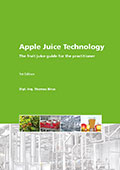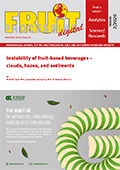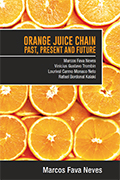The 2022/23 orange crop from Florida is expected to total 28 million boxes of 40.8 kilograms each, the lowest since 1935/36 and 32 % down from that last season, according to the estimates from the USDA.
However, the damages caused by hurricane Ian have not been considered yet. Thus, the recent report has concerned the agents in the citrus sector. The USDA’s next estimates are supposed to be released on Nov. 9th, however, the damages caused by hurricane Ian are not expected to be considered in that report yet, which is supposed to happen in the December’s report.
Thus, local agents believe Florida’s production will be at least 40 % lower than that forecast by the USDA. In 2017/18, when Florida was last hit by a hurricane (Irma), production decreased by 34.6 %, and agents agree that Ian was more destructive than Irma. Besides the damages caused to crops, warehouses and equipment were destroyed too.
In this context, the United States’ necessity of importing orange juice – which was already growing up – is expected to increase even more, which may raise Brazilian juice exports to the country. However, it is important to consider that supply has been low in Brazil, where ending stocks are forecast to be lower than the strategic level (of 250 thousand tons). In August, CitrusBR estimated the ending stocks in the 2022/23 Brazilian season (by June 2023) to total 140 thousand tons, considering higher exports to the USA – however, this increase did not consider the effects of hurricane Ian on Florida crops and production.
So far, imports are following opposite trends in the US, depending on the type of juice: for Not From Concentrate juice (NFC), imports are rising, while for Frozen Concentrate Orange Juice (FCOJ), they are fading. According to Florida’s Citrus Department, from October/21 to August/22, the US imported 9 % less FCOJ than that in the same period of the previous season; however, the imports of NFC juice increased by 43.9 %. On the other hand, ending stocks of both types decreased: 39.5 % for FCOJ and 25.3 % for NFC juice.
Brazil is the US’s major juice supplier. Considering FCOJ, 50.1 % of the total imported by the US in 2021/22 came from Brazil, which was followed by Mexico (42.4 %). Considering NFC juice, 78.6 % of the total imported came from Brazil, against 20.5 % from Mexico.
BRAZILIAN MARKET – The demand for oranges was low in the Brazilian market in the first fortnight of October. According to Cepea collaborators, the unstable weather (with rains and periods of lower temperatures) and the holiday on October 12 constrained consumption. Still, prices remained firm, majorly underpinned by the supply in the in natura market, which is being controlled. For tahiti lime, values faded, due to lower demand. But still, they continued at high levels.









